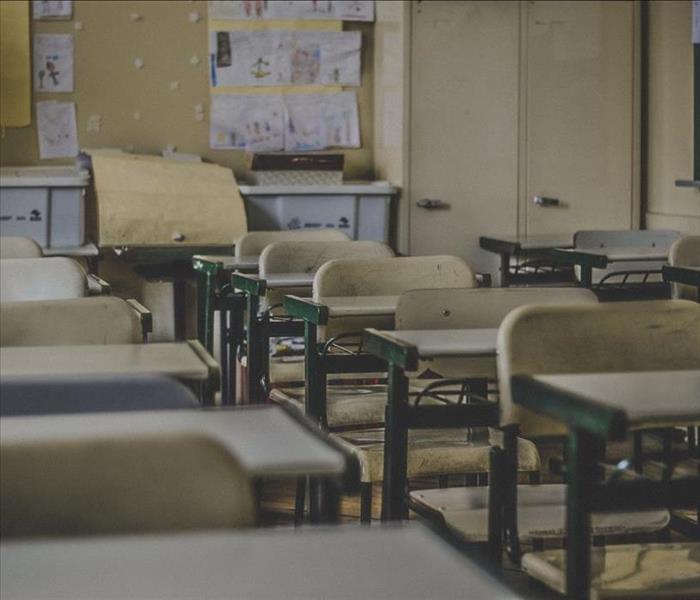The Categories and Classes of Water Damage
6/9/2020 (Permalink)
You already know, intuitively, that certain types of water damage are more severe than others.
A spilled water bottle? No big deal. A city sewer backing up into your basement? A total disaster. A hurricane parking itself right over your city? Just about as bad as it gets.
But did you know that there are pre-determined categories and classes that professionals use to assess water damage quickly and accurately? These classifications provide a useful shorthand for pros to communicate the extent of damage to each other. They also help them to quickly come up with effective mitigation and restoration plans based on prior experience.
We’ll walk you through the standard categories and classes so you can see for yourself just how unique each water loss can be.
Water Damage Categories
The categories of water damage refer mostly to the type of water present at the loss. Understanding the quality of the water is the first step in coming up with an extraction and mitigation plan, as it determines which tools should be used and what processes should be followed.
“Category 1” is the least severe. This category refers to water that is either clean or at least adequately sanitary that it would not pose a threat to a person if accidentally ingested. Say your sink overflowed – since you’re basically dealing with the water that came right out of your tap, it’s probably a Category 1.
“Category 2” is what professionals refer to as “gray water.” This water might be contaminated with microorganisms and should be treated with caution, as it might cause issues if ingested. Gray water might come from a broken toilet or a failing sump pump.
“Category 3” means “black water,” which is about as unsanitary as it gets and likely contains bacteria and other organisms that could cause serious illness if accidentally ingested. The most obvious source of black water could be a sewage backup, though water that has been standing for long enough may also be adequately contaminated to qualify as a Category 3.
Now you can imagine why establishing categories is important – it lets a professional know what they’re dealing with before they arrive on the scene.
Water Damage Classes
While the categories refer to the type of water, water damage classes have more to do with the rate of evaporation, the amount of water present, the size of the area affected and the ease of drying.
“Class 1” is the least severe class of damage. A Class 1 loss would affect only a small area inside a home or business, and it would consist of a small amount of water. Drywall, flooring and carpet would be minimally affected by the water and minimal drying equipment would be necessary.
“Class 2” is more severe – you’re likely dealing with an entire room that has been affected. The water likely came up from the floor, though it may have also wicked up the walls. Drywall, carpet and flooring would also be affected and may need to be torn out or removed depending on the category of the water.
“Class 3” is the most severe. Water in a Class 3 loss generally comes from overhead and affects just about everything in the area of the loss. A Class 3 loss often involves a greater amount of demolition and reconstruction, especially since the ceiling is likely to be affected.
“Class 4” refers not so much to the severity of water damage as the type of material affected. Class 4 water losses involve specialty drying techniques designed to dry out specific materials like stone, hardwood and plaster.
And there you have it – the 3 categories and 4 classes of water damage. No matter how your water loss is classified, we’re here to help. Call SERVPRO of The Southtowns at 716-646-6684 when you need us.






 24/7 Emergency Service
24/7 Emergency Service